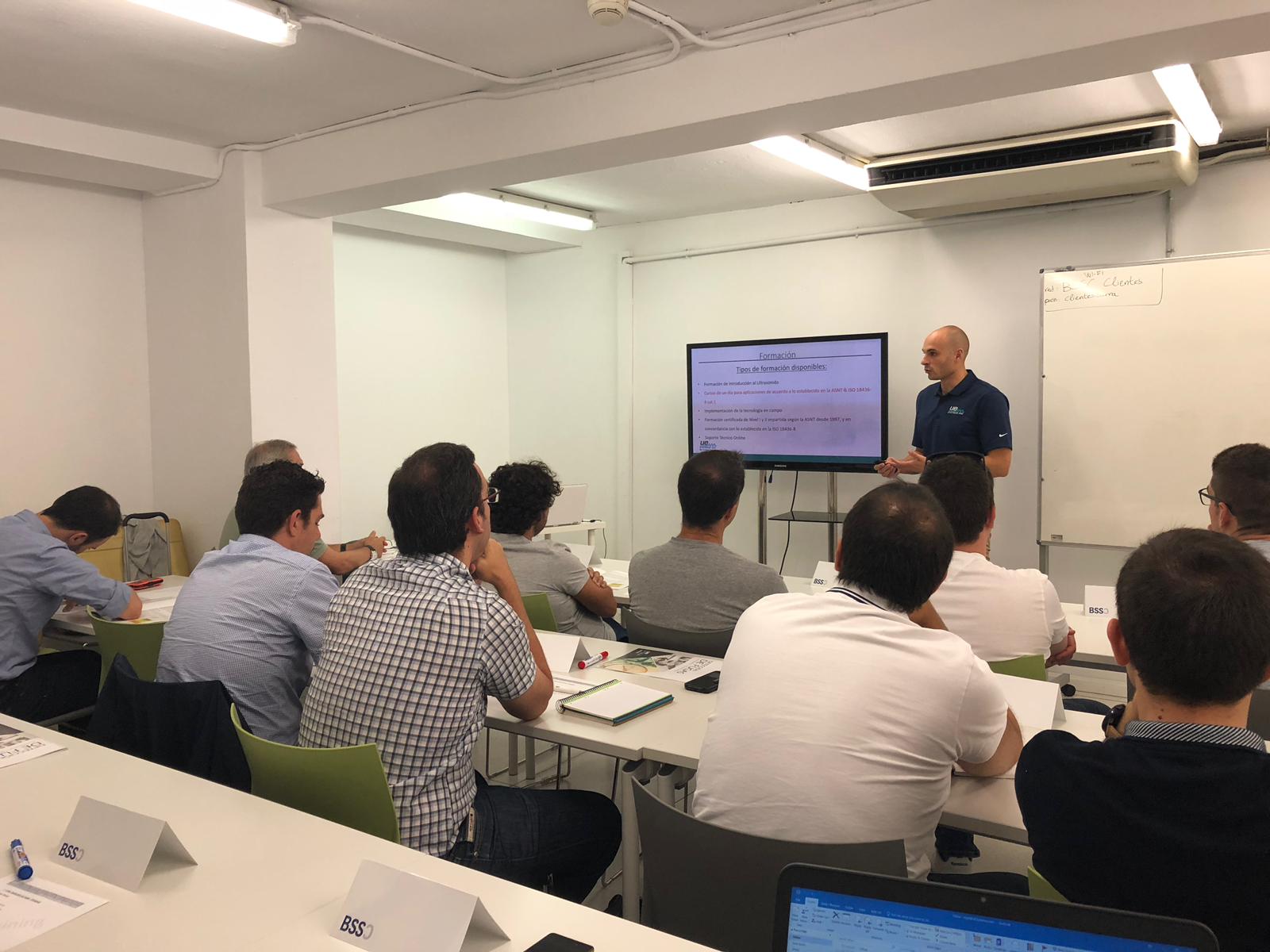Ultrasound has already become one of the most important, reliable, and widely used technologies by maintenance professionals all over the world. Its many applications (from leak detection to a complete bearing monitoring and lubrication program) and the quick learning curve makes it highly popular among inspectors. But to get the maximum out of an ultrasonic inspection instrument, there is one element that companies can’t afford to miss: and that’s standardized Certification Training.
There is a lot one can do with an Ultrasonic inspection instrument. Leak detection is just the basic application for this technology – and it’s so easy! Listen to the leak, pinpoint it and fix it. Finding vacuum leaks, however, requires more experience and knowledge. And the same for creating reports on detected & repaired leaks to include savings, costs, LPM losses and the carbon footprint, a task that’s overlooked more than it should.
More recently, ultrasound has also become the first (and best) choice when it comes to optimizing a lubrication program. UE Systems Grease Caddies are designed specifically for performing condition based lubrication (a Grease Caddy can be attached to the grease gun for easy operation). And it’s also so easy! Listen to the bearing while you lubricate – by observing the dB levels you’ll know exactly when to stop, avoiding over-lubrication. There’s a lot more however: creating a lubrication program using data management software like DMS or correctly setting up a dB baseline for bearings can make a huge difference in your asset’s lifetime.
Ultrasound can even do more, like steam traps and valves inspection. For that, the correct techniques should be applied and the adequate accessories must be used for an accurate diagnostic. Ultrasound can also pick up certain electrical failures (some of them, like Corona, are undetected by infrared), but… how to identify them? Do you know you can identify a specific electrical failure by making a sound recording with the ultrasonic instrument, and analysing it on a special sound analysis software like Spectralyzer?
There is a lot ultrasound can do for a maintenance program. To get the maximum out of it, training is necessary. More than necessary, it is fundamental. Well trained inspectors will be able to explore all the potential of ultrasonic inspection instruments. And from a management perspective, having qualified engineers working with standard procedures is a safe road to success. In conclusion, there is no way a maintenance team can build a world-class ultrasound program without training.
Ultrasound Certification Training
UE Systems is the biggest provider of Ultrasonic inspection instruments in the world and has decades of experience in training maintenance engineers. The company offers two options for Ultrasound Certification Training – CAT I and CAT II – meeting the requirements of the American Society for Nondestructive Testing (ASNT) Recommended Practice, SNT-TC-1A and in accordance with ISO 18436-8, the standard for condition monitoring and diagnosis of machines. These are 32-hour courses, usually along 4 and ½ days, ending with an exam. The training is a mix of theory and hands-on practice, covering all application areas of ultrasound, operation, test procedures & how to use the software.
Topics Covered
These are the topics covered by a CAT I Ultrasound Training:
- All aspects of airborne/structure borne ultrasound technology;
- Effective mechanical analysis, leak detection ans electrical inspections;
- How to perform: compressed air leak surveys, condition-based lubrication, steam trap inspections, bearing analysis and electrical inspections;
- How to improve asset availability and company profitability;
- Improved techniques and methods for quality ultrasound inspection;
- How to enhance recording and reporting skills through a data management software and special analysis software;
- How to reduce and save on energy consumption.
Maintenance professionals who wish to take their ultrasound program even further can attend a Level II course which will give them a deeper knowledge about inspection techniques and procedures:
- Sound theory & ultrasound principles;
- Advanced leak detection: pressure leaks, vacuum leaks, reporting and costs analysis, developing a compressed air program/procedures;
- Electrical inspection: inspection methods, spectral analysis, developing an electrical inspection program;
- Valve inspection: configure instruments, software for ABCD record keeping and reporting, review of compressors;
- Steam traps: software for steam trap record keeping, data logging and steam cost analysis, review procedures;
- Bearings: monitoring, trending and lubrication, set up alarm groups and trend reports, developing a bearing detection / lubrication program.
How to achieve Ultrasound CAT I/CAT II Certification
Normally the training courses consist of open enrolment sessions which are scheduled in advance. UE Systems has available trainings all over the world, in different languages, offering more than 80 annual courses worldwide. On-site Level I training are also a possibility; in case a company wishes to train a whole maintenance team at their own facility.
In order to achieve the official certification, one must pass the general, specific and practical examinations with a score of 80% or better. Documentation of education or experience must be maintained annually. Hearing acuity must meet the minimum requirement of one ear of less than 25 dBHL at 500 Hz to 4 kHz (with or without aid.) Hearing acuity examinations must be documented annually.
Level II certification can only be obtained after getting the Level I certification.
The complete agenda for the training sessions provided by UE Systems can be found at:



